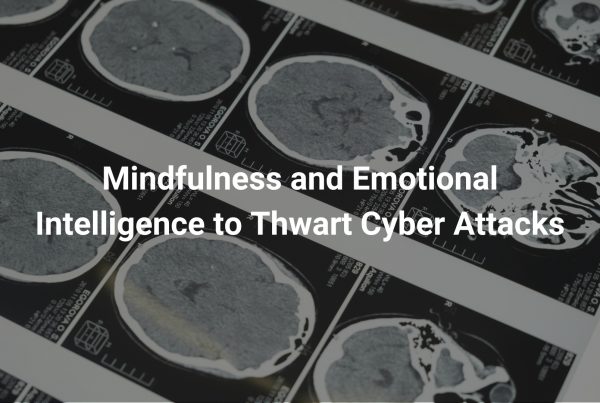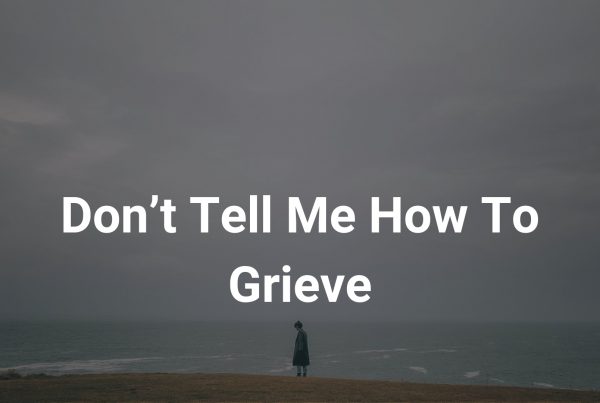Authors: Megan Barnes, Lee Anderson
Published: April 4, 2022
When you purchase items through links on our site, we may earn an affiliate commission. Thank you for supporting the Innocent Lives Foundation.
Social media is an easy way for parents and relatives to share precious moments and hilarious antics of their children with a wider audience than ever before. Some want to share the joy these experiences bring into their lives, others are looking for connection or validation from others with kids, or maybe they’re just looking for an easy way to document their child’s life.
Normally, parents would not think twice about sharing photos of their kids online—why would they? It seems harmless.
The reality is that we do not live in a perfect world. Social media posts that might seem innocent to us could be taken and used for twisted purposes by deviant individuals. Not only that, but those individuals could share those photos with similarly despicable people. What is worse, all of this could wind up horrifically affecting your family and friends later on.
Information from the Field
Photos you may not think twice about sharing—like capturing the playfulness at bath time or family vacation at the beach—can get hijacked.
Law enforcement officers from all over the globe have identified this pattern, as evidenced in the examples below. Each example points out how child predators take innocent images uploaded by loving caretakers and twist them for their own purposes.
Houston, TX – Police Department
A sergeant from Houston’s Police Department, Sgt. Luis Menendez-Sierra explains patterns among predators in collecting the following types of photos:
- Kids in costumes, ballet tutus, school uniforms, bathing suits.
- Babies in diapers.
- Children and babies in the tub or shower.
- Kids in swimsuits, particularly bikinis.
Sgt. Luis Menendez-Sierra explains, “To you, it might be innocent. To this pedophile, it’s like a prize. It’s like, ‘This is amazing. Someone just gave me this for free.’”
Furthermore, Menendez-Sierra shares that predators access these photos from mainstream accounts where regular people share photos of their lives, “They live on those things, especially like (on) Instagram.”
“Pedophiles are also looking for fully clothed pictures of children that most of us wouldn’t think twice about. Like those first day of school photos that include a sign with … details that can help piece together the profile of a child, like their name and age and school.”
“The photos of children posted to social media also work like a legal loophole because they’re not [child sexual abuse material (CSAM)].” Meaning that law enforcement “can’t charge them for having [those pictures].” But the fact that these predators do have those photos is alarming.
Charlotte, NC – Child Rescue Coalition
Many predators go beyond saving and sharing images. They will use photos on social media to seek out children in real life.
The Child Rescue Coalition’s (CRC) CEO, Carly Yoost, pointed out the CRC’s investigators have seen a pattern of predators stalking a child they found on social media.
As of December 2021, “the Child Rescue Coalition is currently tracking 76 individual computers that contain nude images of children [in the city of Charlotte, NC], more than a thousand others statewide.” They are tracking computers with a host of CSAM—“from child pornography to potty and bathtime photos shared publicly by unsuspecting parents.”
According to the CRC, the following are hashtags that predators will use to search for pictures of children online:
#babykini
#babypeeing
#bathchild
#bathtime
#bathtimebaby
#bathtimefun
#bathtimefuntime
#bathtubkids
#bikinikids
#bikinikidslovers
#bikinikidsmodeling
#cantkeepclothesonhim
#childbath
#childbathing
#cleanbabies
#cleankids
#diaperfree
#kidbikini
#kidbikinis
#kidsbathing
#kidsbathroom
#kidsbathtime
#kidsbathtub
#kidsbedroom
#kidsbikinis
#kidshowertime
#kidsshower
#kidsshowertime
#kidsswimwear
#lillootoddlerpotty
#lovesbeingnude
#nakedbaby
#nakedchild
#nakedchildren
#nakedkid
#nakedkiddos
#nakedkids
#nakedkidsagain
#nakedkidsarehappykids
#nakedkidsclub
#nakedkidseverywhere
#nakedtoddler
#nakedtoddleralert
#nappyfree
#naptime
#nudechild
#nudekids
#peeingkid
#potty
#pottydance
#pottydanceparty
#pottydancetime
#pottylife
#pottyparty
#pottytime
#pottytrain
#pottytrained
#pottytrainedbefore2
#pottytraining
#pottytraining101
#pottytraining4kids
#pottytrainingbootcamp
#pottytrainingboys
#pottytrainingdays
#pottytrainingdiaries
#pottytrainingfail
#pottytrainingfun
#pottytrainingguide
#pottytrainingsuccess
#pottytrainingsucks
#pottytrainingtime
#pottytrainingtwins
#pottytrainingwoes
#sexychildren
#sexykids
#sinkbath
#sinkchild
#skinnybabybooty
#splishsplash
#startpottytraining
#toddlerbath
#toddlerbathfun
#toddlerbathhangs
#toddlerbathing
#toddlerbaths
#toddlerbathtime
#toddlerbathtimefun
#toddlerbikini
#toddlerbikinis
#toddlerbikinisrule
#toilettrain
#toilettraining
Hashtags Searched by Predators
#babykini
#babypeeing
#bathchild
#bathtime
#bathtimebaby
#bathtimefun
#bathtimefuntime
#bathtubkids
#bikinikids
#bikinikidslovers
#bikinikidsmodeling
#cantkeepclothesonhim
#childbath
#childbathing
#cleanbabies
#cleankids
#diaperfree
#diaperfree
#kidbikini
#kidbikinis
#kidsbathing
#kidsbathroom
#kidsbathtime
#kidsbathtub
#kidsbedroom
#kidsbikinis
#kidshowertime
#kidsshower
#kidsshowertime
#kidsswimwear
#lillootoddlerpotty
#lovesbeingnude
#nakedbaby
#nakedchild
#nakedchildren
#nakedkid
#nakedkiddos
#nakedkids
#nakedkidsagain
#nakedkidsarehappykids
#nakedkidsclub
#nakedkidseverywhere
#nakedtoddler
#nakedtoddleralert
#nappyfree
#naptime
#nudechild
#nudekids
#peeingkid
#potty
#pottydance
#pottydanceparty
#pottydancetime
#pottylife
#pottyparty
#pottyparty
#pottytime
#pottytrain
#pottytrain
#pottytrained
#pottytrainedbefore2
#pottytraining
#pottytraining101
#pottytraining4kids
#pottytrainingbootcamp
#pottytrainingboys
#pottytrainingdays
#pottytrainingdiaries
#pottytrainingfail
#pottytrainingfail
#pottytrainingfun
#pottytrainingguide
#pottytrainingsuccess
#pottytrainingsucks
#pottytrainingtime
#pottytrainingtime
#pottytrainingtwins
#pottytrainingtwins
#pottytrainingwoes
#sexychildren
#sexykids
#sinkbath
#sinkchild
#skinnybabybooty
#splishsplash
#startpottytraining
#toddlerbath
#toddlerbathfun
#toddlerbathhangs
#toddlerbathing
#toddlerbaths
#toddlerbaths
#toddlerbathtime
#toddlerbathtimefun
#toddlerbikini
#toddlerbikinis
#toddlerbikinisrule
#toilettrain
#toilettraining
To protect your loved ones, please avoid using hashtags like these.
Brisbane, Australia – Queensland Paedophile Task Force
The problem of predators hijacking photos of children on social media is not local to the United States. This is a global problem.
Erin Cash was a detective with the Queensland Police, and she helped perform investigative and covert duties in pedophile task forces, sexual assault, child abuse, and juvenile aid. Cash explains what predators typically look for on social media:
“[They search for] the obvious stuff – like children in bathers, underwear, having a bath, or in a state of undress. Even well placed emoticons covering your child’s genitals can be photoshopped off and genitals photoshopped back on to increase the ‘value’ of the photo. You can take me to South Bank beach at Brisbane on any given day and I will be able to point out lone males taking photos of children… your children.
Online predators are notorious for using what most of us would consider a ‘normal’ or ‘sweet’ photo, and turning it into something nasty. They often look for photos that can be altered to make your child or teen look like they are part of a sexual act.”
Zip Code Not Required
Since the world is going digital, people can connect with others all over the world. It does not matter where you live, as long as you have an internet connection, you can communicate with virtually anyone.
In 2014, a specialist police unit out of Brisbane Australia, Task Force Argos, executed a sting against one of the largest online networks where pedophiles shared CSAM.
One of the predators they identified, who was later arrested, had at least 20,000 indecent images, and around 1,000 of the images depicted children he himself had abused. Some of the photos this predator possessed included children dressed as angels in church, kids smiling at the camera in knee-deep water, and the predator’s own nieces and nephews smiling at their uncle’s camera. Yes, this predator was sharing photos of his own family with other predators.
While the task force was based in Australia, the sting ended up being worldwide. The online network worked with global law enforcement departments to catch predators including the one we just mentioned who was arrested in Great Britain.
Predator Identification Team – Innocent Lives Foundation
The ILF’s Predator Identification Team is constantly seeing these types of photos show up in their investigations. They strongly recommend the following advice:
“Families shouldn’t post any nude or partially nude (swimsuit, in a diaper only, etc.) photos of their child anywhere online, no matter the age. Those should be kept private. Predators will seek out this content and post it on other websites, graphically sexualizing the child. Unfortunately, what they are doing is not illegal. If a parent sees family photos or photos of their child being posted online, even if the predator is writing awful things they fantasize about doing, there is likely no legal action that can be taken. An innocent picture of a baby in the bath can be (and has been) the subject of graphic stories predators share between each other.”
How to Move Forward
We understand this information is scary. The good news is that you can take action to protect your kids, and we will walk you through the steps.
Online Photo-Posting Rule of Thumb
We want to be clear: the desire to share photos of your life is not bad. The key is to be selective about how and where we share those photos.
Leah Plunkett, the author of Sharenthood, offers this rule of thumb for sharing photos on social media, “Any time a picture is shared digitally on social media, you should assume that it could get out of your control.”
Where You Post and Who Can See It
When posting on social media, here are some best practices to keep in mind when deciding where you will post photos and who can see those photos:
- Utilize privacy settings. Making your social media accounts private is a way to filter who has access to your photos/videos.
- Limit the audience of a post.
- You might prefer to refrain from posting your children on social media at all. Instead, you could share photos with a small number of people through photo sharing apps like iCloud Shared Albums, Google Photos, Flickr, and others that require users to log in to see shared photos.
Create a closed, invite-only group on a social media service such as Facebook.
Considerations Before Posting
When posting on social media, here are some guidelines and considerations for what to include or omit from photos in order to keep your kids safe:
- For first-day-of-school photos: do not include school name, teacher, or grade in the photo.
- Turn off the geotagging on your phone to disable location or GPS coordinates from being embedded in photos. For smartphones, follow these instructions. If you’re uploading an image from somewhere else, make sure location data is removed by removing the image metadata.
- Consider using a codename for your children. One good example of this is @lackofimpulsecontrol on TikTok.
- Don’t include your child’s friends in photos that you post without permission.
- Don’t include any personally identifiable information, such as your home address, signs, license plate, name of your child’s school, etc.
- Don’t post pictures of your child in a local sports team uniform. This can be used to identify the location of a child.
- Don’t post any pictures where your child is wearing tight-fitting clothing (e.g., swimming, volleyball, gymnastics, etc.).
How to Talk to Friends and Family about Posting Photos of Your Children Online
We understand that it can be difficult to approach this conversation with friends and family, but it is important to have boundaries—especially when it comes to your loved ones’ safety.
Now that you have a better idea of how to safely share photos, how do you address this with friends and family without offending them?
When having this conversation, we recommend following a four-step process outlined by Robin Dreeke, ILF board member and former director of the FBI Counterintelligence Behavioral Analysis Program.
Dreeke emphasizes four steps for building trust to allow for stronger rapport (i.e., a harmonious relationship where each party understands the other and communicates well).
- Seek others’ thoughts and opinions. Ask questions to understand why they post pictures without interjecting your own thoughts. Make sure you are seeking to understand them and where they are coming from.
- Speak in terms of others’ priorities. This requires us to listen to what was said in the first step and then weave their context into any comments we make.
- Validate others and their thoughts without judging. This is your opportunity to recognize their good intentions (still keep yourself from interjecting any contradicting opinions).
- Empower others with choices. By completing the previous three steps, you have communicated that you are interested in their thoughts/opinions, that you understand where they are coming from, and that you do not judge them. By validating where they are coming from, you are opening the door for them to listen to your thoughts and ideas (choices that you present) that are being placed in context with their priorities.
If you are interested in learning more about this method and diving into these steps in greater detail, we recommend checking out Dreeke’s online course: “The Code of Trust.”
Conclusion
We covered a lot in this article, so here is a quick recap:
- Predators are looking for pictures of kids with little or no clothing (e.g., swimming, bathing, sports, diapers, etc.) or identifying clothing (e.g., school uniforms).
- Predators use hashtags to help them find these pictures more easily.
- Ensure only your intended audience can see the photos you post (e.g., check your privacy settings, use apps that require a login, etc.).
- Be mindful of personal details in pictures posted online (e.g., avoid including the child’s name, school, addresses, street signs, photos of someone else’s child, etc.).
- Set boundaries and educate others about sharing pictures of children (including yours) online.
You are your child’s greatest advocate and protector. The guidelines and suggestions in this post should help you protect those you love while still allowing you to carefully share pictures with friends and loved ones.
The Innocent Lives Foundation works to identify anonymous child predators and help bring them to justice. You can help.





